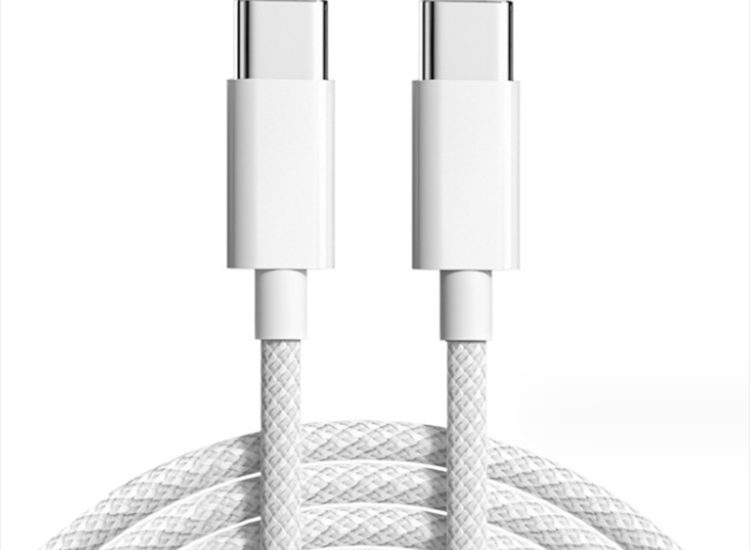In today’s fast-paced digital world, the right charging cable can make a significant difference in the efficiency and convenience of powering up your devices. Whether you’re charging your smartphone, tablet, laptop, or other gadgets, choosing the right cable is crucial. In this blog, we’ll dive into three popular types of cables: Type-C to Type-C cables, Micro USB cables, and Braided USB-C cables. We’ll explore their key features, uses, and why they might be the best choice for your tech needs.

Type-C to Type-C Cables: The Future-Ready Connection
Type-C to Type-C cable are rapidly becoming the standard for modern devices, thanks to their versatility and high-speed capabilities. These cables are equipped with USB-C connectors on both ends, making them ideal for:
Fast Charging: One of the biggest advantages of Type-C to Type-C cables is their ability to support fast charging protocols, such as USB Power Delivery (PD). This allows devices like laptops, tablets, and smartphones to charge at significantly higher speeds, which is a must-have feature for power users on the go.
High-Speed Data Transfer: Type-C to Type-C cables are not just for charging—they also excel at data transfer. With support for USB 3.1, 3.2, or even Thunderbolt 3, these cables can transfer data at speeds up to 20Gbps or higher, making them ideal for quickly moving large files between devices.
Versatility and Future-Proofing: As more devices adopt USB-C as their primary port, Type-C to Type-C cables ensure you’re ready for the future. They can connect a wide range of gadgets, from the latest smartphones to external SSDs, monitors, and more.
When selecting a Type-C to Type-C cable, it’s important to choose one that meets your specific needs in terms of power output and data transfer speed. Look for USB-IF certified cables to ensure safety and compatibility.
Micro USB Cable: The Legacy Standard Still in Use
Despite the rise of USB-C, Micro USB cables remain widely used, especially for older devices and accessories. Micro USB was the dominant charging and data transfer standard for many years and is still relevant for:
Older Smartphones and Tablets: Many devices, especially those released before the USB-C era, use Micro USB ports for charging and data transfer. If you have legacy devices or accessories like Bluetooth speakers, power banks, or some wearables, Micro USB cables are still a necessity.
Affordable Accessories: Due to their widespread use and lower cost, Micro USB cables are commonly found with affordable tech accessories. Items such as budget headphones, game controllers, and some cameras still rely on Micro USB for connectivity.
Compatibility: Micro USB is compatible with a broad range of devices and is often used with adapters to connect to USB-C or other port types. This makes it a versatile option for those who have a mix of old and new devices.
While Micro USB is slowly being phased out in favor of USB-C, it’s still a reliable choice for specific use cases. However, keep in mind the slower charging and data speeds compared to USB-C.
Braided USB C Cable: Durability Meets Style
Braided USB-C cables stand out not only for their functionality but also for their durability and aesthetic appeal. These cables are wrapped in a braided fabric material, offering several key benefits:
Enhanced Durability: The braided exterior provides extra protection against wear and tear, making these cables less prone to fraying and breaking. This makes them ideal for daily use, travel, and environments where cables are frequently plugged and unplugged.
Tangle-Resistance: The braided design also helps prevent tangling, a common frustration with standard plastic-coated cables. This means less time spent untangling and more time charging and using your devices.
Style and Variety: Braided USB-C cables come in a wide range of colors and patterns, allowing you to choose a cable that matches your personal style or complements your tech setup.
High Performance: Despite their stylish looks, braided USB-C cables don’t compromise on performance. Many braided cables support fast charging and high-speed data transfer, making them both functional and fashionable.
When purchasing a braided USB-C cable, check the specifications to ensure it supports your device’s power and data needs. A well-chosen braided cable can add both practicality and flair to your tech collection.
Conclusion
Choosing the right cable—whether it’s a Type-C to Type-C, Micro USB, or Braided USB-C—depends on your specific needs and the devices you use. Type-C to Type-C cables offer the fastest speeds and future-proof compatibility, Micro USB cables are essential for legacy devices, and braided USB-C cables combine durability with style. By understanding the benefits of each type, you can make informed decisions to keep your devices powered and connected efficiently. No matter which cable you choose, ensure it meets the necessary standards and certifications to enjoy safe and reliable performance.